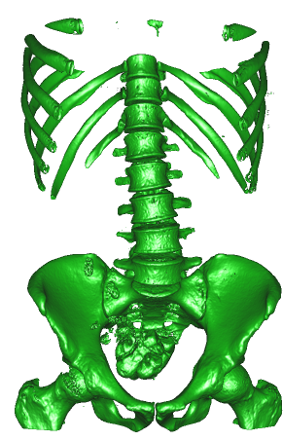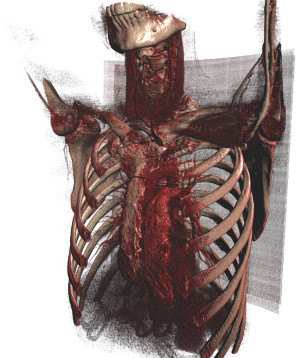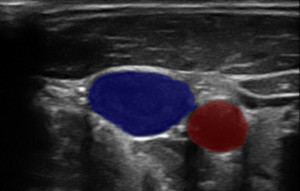FAST
FAST 是一个开放源码的跨平台框架,主要目标是在利用多核 CPU 和 GPU 的异构系统上更容易地进行医学图像的高性能处理和可视化。为了实现这一目标,FAST 使用了现代 C++、OpenCL 和 OpenGL。
开始使用
首先,确保你已经 安装了需求。
可以 下载 Windows 和 Ubuntu Linux 的稳定的二进制版本/安装程序。
要开始使用这个框架,请看 FAST 入门指南 和示例。
FAST 也可以通过 pip 在 Python 3 中使用:pip install pyfast
可以在 这里 找到 Python 的例子。
主要特点
- 数据流 -- FAST 中的处理管道可以处理静态和动态/时间数据,而不需要改变代码。FAST 可以从电影文件、您的网络摄像头、英特尔 RealSense 摄像头、图像序列,甚至直接从 Clarius 等超声波扫描仪中流出数据。
- 深度学习 -- FAST 为神经网络提供了一个通用的接口,支持不同的模型格式(ONNX、protobuf、SavedModel、OpenVINO、UFF)和后端(Google TensorFlow、NVIDIA TensorRT、Intel OpenVINO),使得创建实时神经网络管道成为可能。
- 高层数据管理 -- FAST 中的数据对象在所有处理器上代表数据,如图像。FAST 在不同的存储区域中保持数据的一致性,从而消除了开发人员显式内存处理的负担。
- 广泛的数据格式支持 -- FAST 支持多种数据格式(DICOM、元图像(MHD)、常规的 jpg/png/bmp 图像、视频、HDF5、VTK 多数据、整张幻灯片图像、超声波文件格式)和数据类型(图像2D和3D、灰度和彩色、图像金字塔、表面网格、顶点、线条、文本++)。
- 高性能算法 -- FAST 拥有多个常用算法的高性能并行 OpenCL 实现,如行进立方体曲面提取、高斯平滑、非局部手段、块匹配跟踪和种子区域生长等。
- 快速并发可视化 -- 渲染和计算在不同的线程中完成,以保证平滑的响应式可视化。支持多种类型的可视化,包括 3D(网格、点、线、图像切片和体积渲染)和2D(2D图像、图像切片和分割/标签渲染、整张幻灯片图像(WSI)金字塔)。
- 互操作性 -- FAST 可以和 Python 一起使用,也可以很容易地集成到现有的 Qt 应用程序中。
科研
以下研究文章中已经描述了 FAST。如果你使用这个框架进行研究,请引用它们:
FAST:异构医学图像计算和可视化框架
Erik Smistad, Mohammadmehdi Bozorgi, Frank Lindseth
International Journal of Computer Assisted Radiology and Surgery 2015。
利用 FAST 对医学图像进行高性能神经网络推理、流式处理和可视化处理
Erik Smistad, Andreas Østvik, André Pedersen
IEEE Access 2019
构建
要设置和构建框架,请看你的操作系统的说明。
- Linux (Ubuntu)
- Windows
- Mac OS X 注意:由于苹果公司决定停止支持 OpenCL 和 OpenGL,Mac OS X 版本是不稳定的,而且不再积极维护。
许可证
FAST 本身是在允许的 BSD 2-clause 许可下获得许可的,然而 FAST 的二进制版本包含了一些第三方库,这些库使用了许多不同的开源许可(MIT,Apache 2.0,LGPL ++),更多细节请参见发行版中的许可文件夹。




